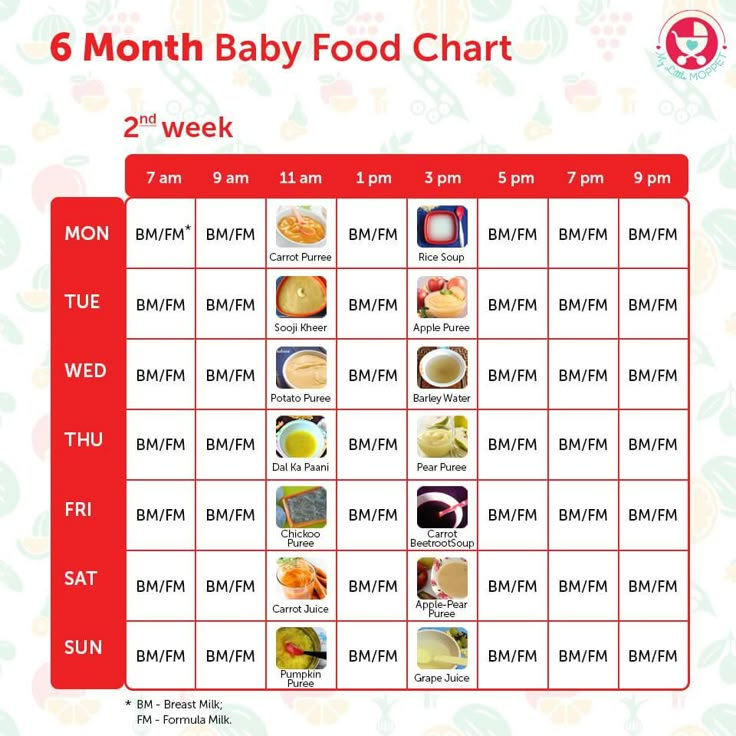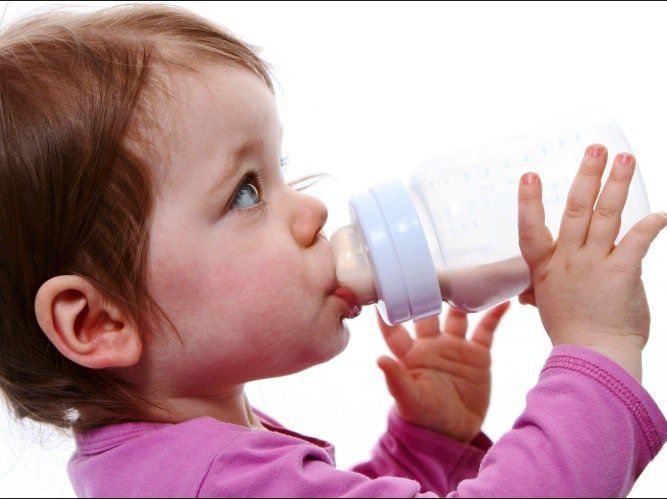What can i feed my baby squirrel
Everything You Ever Wanted to Know
Squirrels are one of the most entertaining animals to watch. They're so playful and active. And baby squirrels are just adorable. If you hear a high-pitched squeaking sound coming from the ground, look around. You might have found a baby squirrel. If you do see one without its mother around and it is in need of assistance, you may be the only person who can save it, but that should be your last resort. Primarily you should leave it alone, and wait for its mother to care for it. If that isn't an option, the second best action is to find a wildlife rehabilitator to care for the squirrel until it can care for itself - more on that later. Only when the first two actions are unavailable should you consider trying to care for the baby yourself. In that situation I hope this guide serves and a sound basis for your journey.
Did you know? A baby squirrel can't take care of itself until it is 12 weeks old!
What Species is the Squirrel?
The two most common species of squirrel that you'll find in the US are Eastern Greys and American Red squirrels. As the names suggest, you can tell them apart by their coloring. Eastern Greys can be black, gray, or brown with golden hues. They are mostly seen in the eastern US and Canada.
American Red squirrels have a reddish-brown hue on their head and back but a white undercoat. They are also smaller than greys. You can see red squirrels east to west, north to south throughout North America.
Both species develop at about the same rate, and you can care for either species in the same manner.
Identify the Baby Squirrel's Age
Unlike other animals at birth, baby squirrels can't do anything on their own. They require intense care as they develop. You can estimate how old the baby squirrel is by matching its appearance and behavior to these descriptions.
- Newborn to 1 week: pink body, no fur, eyes closed, body measures about three inches long (not including the tail), American red squirrels will have a dark stripe down the middle of their snout
- 2 weeks: fur starting to develop on the back but not on the underside, eyes still closed
- 3 weeks: has grown to about 4 inches long (excluding tail), front lower teeth are coming in, eyes still closed
- 4 weeks: body is approximately 5 inches long, fur growing on the underside, eyes open
- 5 weeks: 6 inches long, top front teeth coming in
- 6 weeks: develops back (cheek) teeth, can sit up on its own and hold food in its front paws
- 7-8 weeks: 7-8 inches long, fur has fully grown in, becoming more active
- 8-12 weeks: learning to climb, still smaller than adult squirrels, can be released outdoors if healthy
Baby squirrels need care for about three months. After that, you can continue supporting them by releasing them outside and filling a squirrel feeder for them to use. Place it in an easy-to-reach, easy-to-see location. Providing a squirrel feeder will ensure that they are getting enough nutrition as they learn to forage for their food supply.
After that, you can continue supporting them by releasing them outside and filling a squirrel feeder for them to use. Place it in an easy-to-reach, easy-to-see location. Providing a squirrel feeder will ensure that they are getting enough nutrition as they learn to forage for their food supply.
How do You Know if a Baby Squirrel is an Orphan?
You might find a baby squirrel alone and feel the need to care for it. Just be sure that the mother is no longer able to care for it herself.
If the baby squirrel is injured or looks dehydrated or malnourished, take it. If it is hurt, the mother will not be able to heal it. Depending on the severity of the injury, you or even a veterinarian might not be able to save it, but human care will be more effective than the little that the mother squirrel can do. If your pet dog, cat, or another predator carried it away from its home, the mother might not be able to find it again anyway.
If it is dehydrated or starving, you can tell that the mother has not been able to care for it.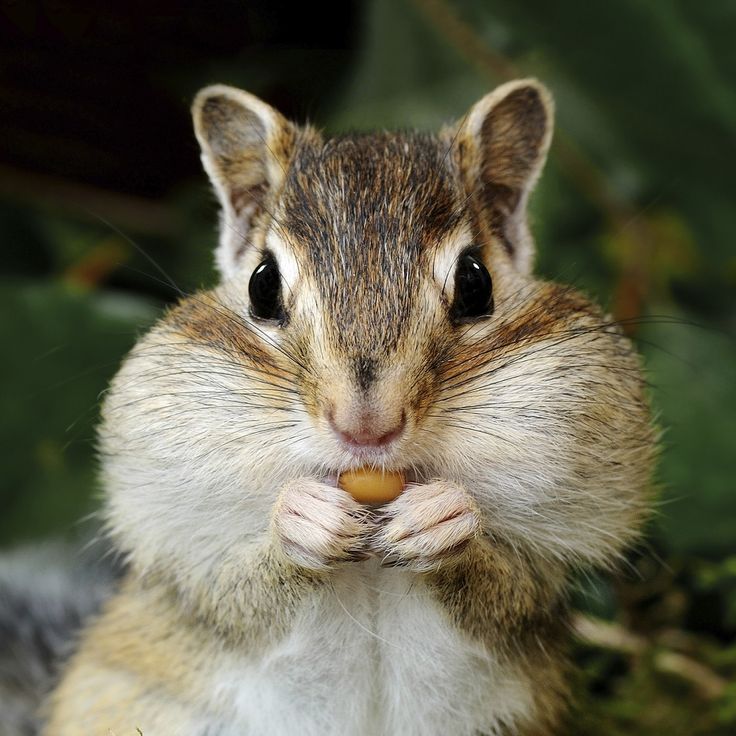 She might have been trapped and removed in another yard, killed by a predator, or died from falling or natural causes.
She might have been trapped and removed in another yard, killed by a predator, or died from falling or natural causes.
If, however, the baby appears healthy, leave it where it is until dark. Monitor it from afar as much as you can to keep it safe, but allow time for the mother to return to it. She might be watching you to make sure it's safe for her to return. She might be creating a new nest and need time to finish it before carrying the baby to its new home. She might be in the process of moving the rest of the litter to the nest and will eventually come back for this one. Finally, if the baby fell from the nest due to high winds or a predator attempting to carry it off, it might take her some time to find it and carry it back to safety.
Did you know? A squirrels teeth never stop growing! They have to gnaw and chew on things to keep their teeth from getting too large.
You can help keep the baby squirrel warm by creating a make-shift nest around it. Place bottles full of warm water under a blanket, towel, or old clothing.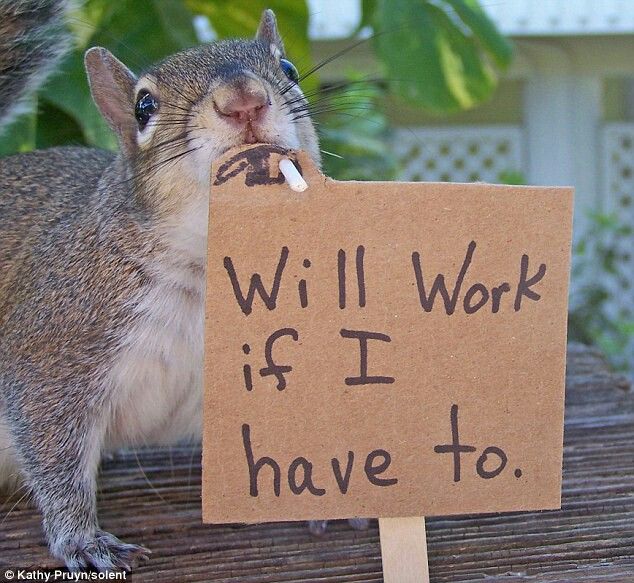 Surround the baby with warmth, but do not cover it. Placing the baby in a box, even with the lid open, or covering it with cloth, can make it harder for the mother to see. It also might make her more wary of approaching your setup. You can pick up the baby to position it more comfortably and securely in the nest. Unlike, birds, squirrels will not be bothered by the smell of human oils on their babies. They will shy away from the baby if they are chilled, so keeping them warm is the best you can do for them at this point.
Surround the baby with warmth, but do not cover it. Placing the baby in a box, even with the lid open, or covering it with cloth, can make it harder for the mother to see. It also might make her more wary of approaching your setup. You can pick up the baby to position it more comfortably and securely in the nest. Unlike, birds, squirrels will not be bothered by the smell of human oils on their babies. They will shy away from the baby if they are chilled, so keeping them warm is the best you can do for them at this point.
If you notice the likely mother come to the baby but then leave again, don't be discouraged. She knows where the baby is, has checked on its health, and has likely gone to forage for food or secure a new nest.
Squirrels are only active during the day, so if the mother has not returned by dark, you can assume that she isn't able to. If she could, she would have. She would not leave the baby on its own, even if a new nest were not ready to receive it. She would come back to check on and feed it at the very least.
Correcting Human Disruptions
Before we move on to adopting and caring for the orphan you found, you might be able to reunite it with its mother by changing or reversing some human behaviors. Construction and landscape projects often disrupt animal habitats. There's nothing wrong with maintaining your property, but you might find a litter of baby squirrels separated from their mother when you do so.
Where did you find the baby squirrel? Was it near a tree you recently cut down? Was it under the porch where you recently applied a new lattice? Was it on your roof?
Squirrels do not always create nests in trees . They will burrow or find a warm corner. Nestling up against a house under a dark porch is quite cozy for a squirrel. A leafy gutter also makes a soft bed. If you've recently cleaned out your gutters or closed off an area with new fencing, consider reversing your steps for a time. Make a temporary leaf nest in the gutter and give the mother time to reclaim her young. Open the fence or latticework. If you cut down a tree, don't chop the wood or remove the brush right away. The mother will see that her chosen location is no longer suitable and will make a new nest elsewhere. Once she's moved the babies to a new home, you can continue with your project.
Open the fence or latticework. If you cut down a tree, don't chop the wood or remove the brush right away. The mother will see that her chosen location is no longer suitable and will make a new nest elsewhere. Once she's moved the babies to a new home, you can continue with your project.
Adopting a Baby Squirrel for Care
Being afraid of humans is a partly instinctual, partly learned behavior for squirrels. Baby squirrels who can walk but are alone, will often overcome their fear and approach humans. They've even been known to follow people home or climb up a person's leg. It's an interesting, immensely heartwarming phenomenon, but it also shows how desperate the baby is. If they are willing to approach you for possible help, they have apparently been left alone for some time. Although mobile at six weeks old, a squirrel relies upon and stays with its mother until it is about 12 weeks old.
Younger babies cannot even begin to walk or gather food for themselves. Most of the time, the babies that you find will be newborns who haven't yet opened their eyes. Baby squirrels are docile enough that there is little danger of them biting you. They will generally accept you picking them up, handling them, and feeding them. If you have the time, caring for a baby squirrel can be an exceedingly rewarding experience.
Most of the time, the babies that you find will be newborns who haven't yet opened their eyes. Baby squirrels are docile enough that there is little danger of them biting you. They will generally accept you picking them up, handling them, and feeding them. If you have the time, caring for a baby squirrel can be an exceedingly rewarding experience.
Initial Care: Checking for Injuries and Bathing
The first step is to check the baby squirrel for injuries.
1. Using a soft cloth, gently pick up the baby and carry it indoors to a well-lit room with a sink. You can also fill a bucket or large basin with warm water if you don't want to take it inside or into the central living area of the house.
2. Caress the baby's face. It should move its head from side to side. If it doesn't, the baby might have a broken neck or spinal injury.
3. Gently squeeze each paw and the tail. Watch how the baby reacts. It should pull away from the pressure. If it doesn't, or if the movement seems unnatural, it might have a broken leg or tail.
If it doesn't, or if the movement seems unnatural, it might have a broken leg or tail.
4. Next, mix some dish soap in warm water and bathe the baby. Use a soft washcloth to clean any cuts and brush away debris or parasites. Be sure to wash the nose and face. Clear the nostrils for natural breathing. Using a soft, wet cloth simulates a mother's tongue grooming the baby.
5. Lastly, use a Q-tip to stimulate the baby squirrel's genital area and anus. Doing so is often necessary for baby animals to release waste and would be a regular part of a mother's care. It might take a couple of minutes' worth of stimulation before the baby pees. You will need to keep stimulating the area until it is finished to ensure the baby empties its bladder.
If a male squirrel does not start urinating at least a little amount within a couple of minutes, check for a swollen penis. Baby squirrels suck on any nipple-like appendage and can sometimes cause a brother's penis to swell and scab over.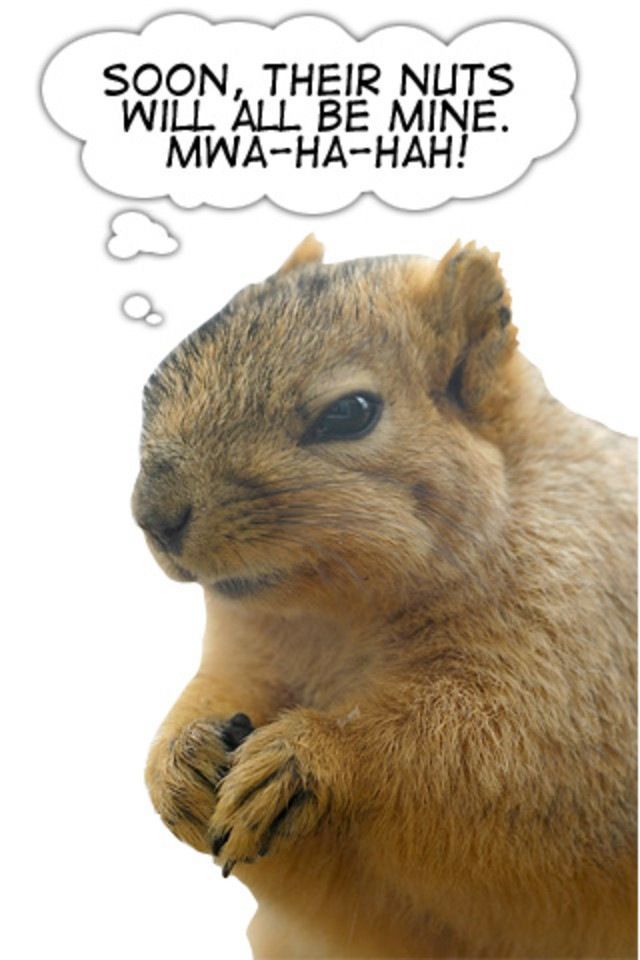 If this is the case, soak the lower part of the squirrel's body in warm water for about 20 minutes to soften the scab. You can then wipe the scab off with the washcloth and allow it to release its urine.
If this is the case, soak the lower part of the squirrel's body in warm water for about 20 minutes to soften the scab. You can then wipe the scab off with the washcloth and allow it to release its urine.
If the baby has been alone for a significant amount of time, the urine might be more brown than clear, showing its degree of dehydration.
If you suspect broken bones, find deep lacerations, or unable to stimulate urination, call a veterinarian for help. Some vet offices see small rodents. Others can direct you to a wildlife specialist who might be able to help. If your cat caught the squirrel, it would need antibiotics to fight off infections received from the cat. Just as a cat scratch or bite can irritate your skin, feline germs and bacteria can be toxic to small animals.
Secondary Care: Warming
The warm bath will have helped heat the baby up. It will drop again, though, as it dries. To keep the baby's core temperature up, place it in a box with a blanket bed.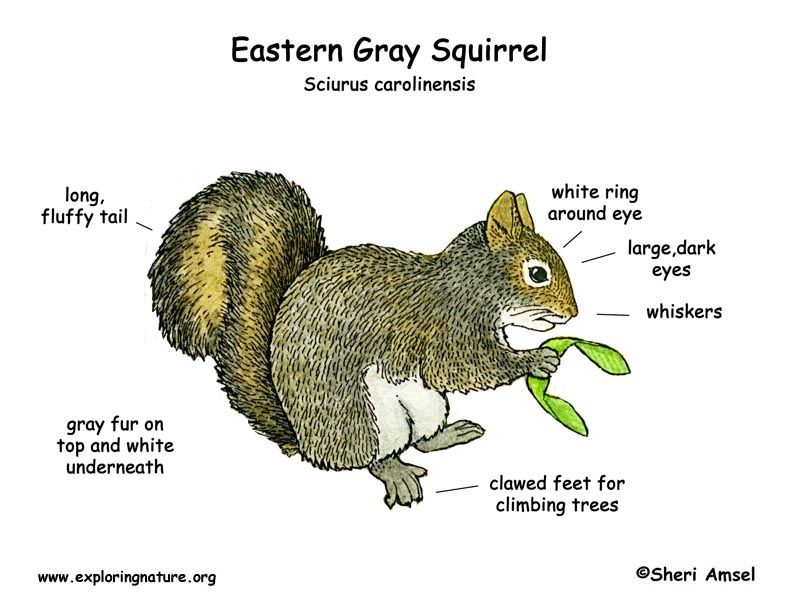 Cover the baby, even its head, and put the box on a heating pad or next to a heater. Check on the baby every 15 minutes. If you found more than one baby squirrel, place them next to each other for comfort and to share body heat. The presence of a littermate will help the squirrel feel safe and relaxed.
Cover the baby, even its head, and put the box on a heating pad or next to a heater. Check on the baby every 15 minutes. If you found more than one baby squirrel, place them next to each other for comfort and to share body heat. The presence of a littermate will help the squirrel feel safe and relaxed.
You can also hold the baby squirrel cupped between your hands or let it snuggle against your body for warmth.
Rehydrating
Rehydration is often more important than food during the first day of care. You can use Pedialyte or mix half a teaspoon of salt and half a teaspoon of sugar in two cups of water and feed it to the squirrel with a feeding syringe. Pedialyte is more efficient than the water mixture, so if you can pick some up at the store, do so. Look for the unflavored variety, but if you can't find it, squirrels will generally drink the flavored mixes as well.
A feeding syringe does not have a needle, but an open, cone-shaped top. It is often used to administer oral liquid medications to animals. You can dip the top into the liquid, pull back on the plunger to fill the vial, and then press the plunger forward to drop or squirt the liquid into the squirrel's mouth.
You can dip the top into the liquid, pull back on the plunger to fill the vial, and then press the plunger forward to drop or squirt the liquid into the squirrel's mouth.
To help the squirrel drink, place it upright in a sitting or position or as if it were standing on its hind legs. You can do this by mounting a blanket or towel around it or holding it in your hand. You don't want to give it liquid lying on its back as it might choke. If the baby squirrel is particularly wiggly, you might need to hold it to keep it still. It might also be helpful to use cotton gloves when handling the squirrel and to avoid washing them unless they become soiled with waste material. The gloves will absorb the squirrel's scent and help it to feel safe and calm.
Administer the liquid slowly. A squirrel that drinks too fast can choke and allow fluid to enter its nasal passages. If the liquid starts coming out of its nose, turn it upside down to let the liquid to drain out entirely through the nose rather than flowing down into its lungs.
You'll want to go slowly at first as the baby squirrel might be too weak to swallow much at a time. It might also be too small to drink very much during one sitting, so continue to offer the liquid about every half hour. After every drinking period or at least once per hour, re-stimulate the squirrel's genitals. When the urine appears light yellow or clear, you can move on to more nutritious foods.
Clean the baby's face and neck with a wet, warm cloth after every drinking period as the salt and sugar water can leave a sticky residue.
What if the Squirrel Won't Drink?
Most animals need to feel safe and comfortable before they can turn their attention to eating or drinking. It's part of their survival instinct. Be safe first; then eat when they can. If your baby squirrel doesn't seem to want to drink, try the following.
- Hold the squirrel upright in hand towel to keep it warm.
- Stimulate its genitals with a wet, warm cloth to see if it needs to urinate before taking more liquid.

- Make sure you are in a quiet environment.
- Dim the lights to simulate a dark and hidden nest.
- Hold it close to your face and whisper to it so that it gets used to your scent and learns that you're not a danger.
- Warm the Pedialyte or salt and sugar water to room temperature.
- Stay calm and patient. Don't try rush or the squirrel will sense your unease.
Once you establish the right mood and bond with the baby squirrel, it will usually take liquid from you without hesitation.
What to Feed a Baby Squirrel
If the baby squirrel has done well with the syringe, you can graduate to a feeding bottle with elongated nipples. You might need to poke holes in these nipples. To do so, just pierce the nipple with a needle or toothpick and then boil the nipple with the needle or toothpick still in the hole. Remove the nipple from the boiling water, let it cool, and then remove the piercing instrument. The hole will be permanently formed.
Adult squirrels aren't too discerning about what they'll eat , but a baby squirrel's digestive system is sensitive. Feeding a baby squirrel the wrong thing could cause diarrhea and dehydration or, worse, send their body into shock. Never feed them human formula, cow's milk, or milk substitutes. If you aren't sure on what baby squirrels eat, the best feeding solution you can buy is puppy milk. Esbilac and similar products are available at veterinary offices and pet food stores. Look for the powdered version and then slowly introduce the solution to the baby squirrel's system in the following stages.
- 1. Mix one part powdered puppy milk in three parts Pedialyte or salt and sugar water.
- 2. Mix two parts puppy milk in two parts liquid.
- 3. Increase to three parts puppy milk to one part rehydration solution.
- 4. Continue with undiluted puppy milk.
Stay at each stage for two feedings and offer the solution every two and a half hours. It would be helpful to wake up once during the night to provide the baby squirrel an additional feeding time. Be sure to follow the directions on the puppy milk packaging so that powder fully dissolves. Warm your mixture to room temperature to make it palatable to the baby squirrel and to avoid chilling it.
It would be helpful to wake up once during the night to provide the baby squirrel an additional feeding time. Be sure to follow the directions on the puppy milk packaging so that powder fully dissolves. Warm your mixture to room temperature to make it palatable to the baby squirrel and to avoid chilling it.
The amount that you should feed a baby squirrel during each period will depend on its age and species. Keep in mind that a malnourished squirrel will probably not be able to take a full feeding until it regains its strength.
- Newborns to 1 week: Eastern greys .75cc-1.25cc every 2.5 hours / American reds .5cc every 2.5 hours
- 2 weeks: Greys 2.5-3cc every 3 hours / Reds 1-1.5cc every 3 hours
- 3 weeks: Greys 4-5.5cc every 3 hours / Reds 1.75-2cc every 3 hours
- 4 weeks: Greys 6-9cc every 3.5 hours / Reds 2-2.5cc every 3.
 5 hours
5 hours - 5 weeks: Greys 10-12cc every 4 hours / Reds 3-4cc every 4 hours
- 6 weeks: Greys 12-14cc every 4 hours / Reds 4-6 cc every 4 hours
- 7 weeks: Greys 14-16cc every 8 hours / Reds 7-8 cc every 8 hours
- 8-12 weeks: Greys 16-18cc every 12 hours / Reds 9-10 cc every 12 hours
Remember that American red squirrels are smaller than Eastern greys and so will need much less food. You will also need to continue stimulating urination and washing the face and neck after each feeding.
Judging Digestive Health
Pay attention to the baby squirrel's stool. When it is dehydrated, the stool might be dark brown or black and will often be quite loose. After it begins digesting the puppy milk, it should turn to yellowish-brown pellets. If the stool appears very pale, add plain water to the mixture to dilute the milk solution.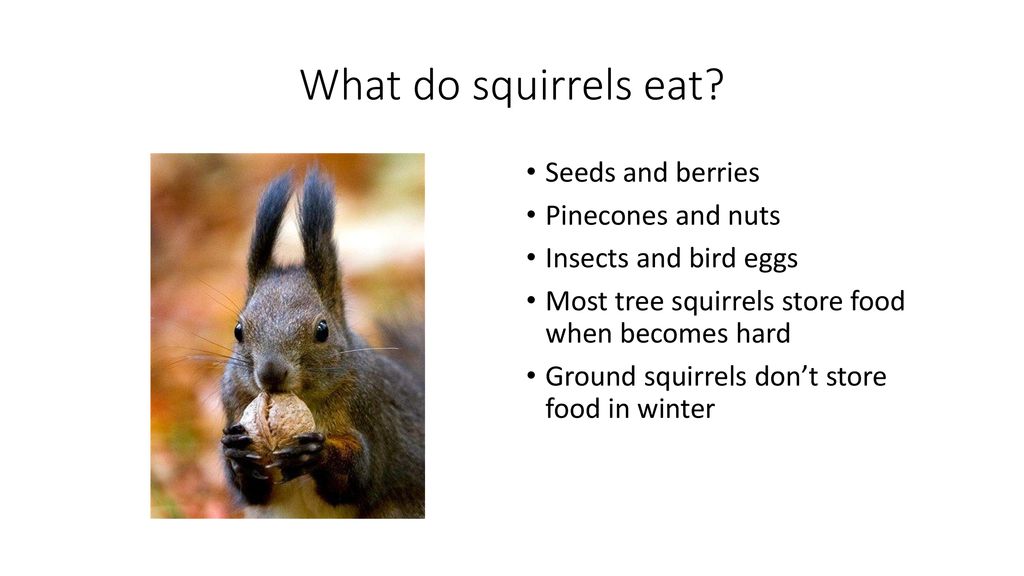
If the baby's stomach seems bloated, soak its lower body in warm water for half an hour and massage its abdomen. Skip a feeding period and administer only Pedialyte or salt and sugar water. If the bloating does not dissipate within 24 hours, call a veterinarian or wildlife specialist to check for parasites.
Contact Your Local Wildlife Service
After you have done your best to clean, warm, feed, and treat injuries, the next best step is to call your local wildlife authority. Park services often have nature centers where they can house and rehabilitate injured or orphaned animals. The staff and volunteers of a nature center will have the time and resources to best care for your orphaned squirrel. You would also be free to visit and check up on the little one's progress. And a wildlife shelter might already have another baby squirrel with which they can socialize your rescue.
Guidelines for Ongoing Care
If you are committed to caring for the baby squirrel yourself, here are a few essential guidelines to follow.
1. A squirrel is not a pet. You should not approach caring for a baby squirrel expecting it to become a permanent pet. Once it is mobile, it will be mobile. It will either tear around your house like it does the trees outside or it will be miserable while confined to a cage. Without enough area to expend energy, a caged squirrel will become violent. Even raised from birth, a squirrel cannot be domesticated. It is not an indoor animal.
2. A squirrel should be socialized with other squirrels. If you found one orphaned squirrel, there's a chance that the rest of the litter is nearby. Do your best to walk your yard for a couple of days, listening for little squeaks. Raising the squirrel with others will help it learn how to play and behave appropriately. They will watch each other and pick up new skills.
3. A squirrel should not socialize with other pets or people. For the sake of its outdoor survival, a squirrel needs a healthy fear of people and other animals. You will need to feed, bathe, and play with it to help it develop, but do not let others do so. It will recognize you as its “mother” while retaining its cautious attitude toward people who are not you. Keep it in a room by itself so that other people are not likely to pass its cage. Do not let it become familiar and friendly with your dog or cat. If they have a positive relationship with your pet, they might not know to run when they encounter another of the same species outside.
You will need to feed, bathe, and play with it to help it develop, but do not let others do so. It will recognize you as its “mother” while retaining its cautious attitude toward people who are not you. Keep it in a room by itself so that other people are not likely to pass its cage. Do not let it become familiar and friendly with your dog or cat. If they have a positive relationship with your pet, they might not know to run when they encounter another of the same species outside.
Continued Feeding
You can continue with the puppy milk according to the age and breed guidelines above, but consider thickening it with whipping cream or plain yogurt to add fat content. If the baby squirrel is very young or if you intend to nurse more baby squirrels, you can order specially made squirrel milk from Fox Valley Animal Nutrition. Some pet stores will carry their products, but they are more of a specialty item, not in demand on most shelves.
It will be tempting to give the squirrel as much milk as it wants, but be careful to follow the guideline. Some animals do not know their limits and will overheat, giving themselves bloated stomachs, diarrhea, or other digestive issues.
Some animals do not know their limits and will overheat, giving themselves bloated stomachs, diarrhea, or other digestive issues.
Once they are doing well and have reached a certain age, you can also introduce solid food into their diet. You do not need to regulate solid food once the squirrel is doing well. Allow it to eat as much as it wants.
- At three weeks, you can provide rat and mice rodent block for them to chew on.
- At six weeks, add unsalted sunflower seeds and raw fruit, such as apple slices, grapes, and banana.
Creating a Habitat
The “nest” that you make for your squirrel will need to change as it grows.
Stage 1: At first, a baby squirrel isn't very mobile so that a small box will do just fine. Lay blankets or old towels in the bottom of the box and place it in a dark, quiet room over a heating pad or next to a heater. Poke holes in the box for air circulation and close the lid. Recover the baby squirrel after every feeding or handling time.
Make sure that the cloth does not have loose strings or holes in which the baby squirrel could get caught. Wash or change the materials once a day with unscented detergent. Do not use dryer sheets or other scented additives. It's best to let the squirrel's scent permeate the fabric so that it feels safe without distracting smells. Strong odors can also irritate a baby squirrel's sinuses and lungs.
Do not use woodchips like you would in other rodent habitats. The chips will be too rough the baby squirrel's skin, too aromatic for its lungs, and will not provide enough insulation to keep it warm. You can move to woodchips in Stage 3.
When the baby is about three weeks old, they will start developing their lower front teeth. To help them teethe and to begin introducing solid food into their diet, place a few pieces of rodent block in their box. It is a small pellet-shaped food that will provide all the nutrition the squirrel needs. Choose rodent block made for mice and rats rather than hamsters and gerbils to match the squirrel's needs more closely.
Stage 2: When the baby reaches five weeks and its eyes open, it will want to be more mobile. Move it to a larger box, dog carrier, or rodent cage. If the holes in the pet carrier or cage are large enough for the squirrel to squeeze through, cover the panels with a smaller material, such as bird netting, chicken wire, or old window screens.
Add a hanging water bottle to the side of the habitat and give the squirrel a mineral stone for small mammals. The mineral stone is a salty treat they will lick to gain essential minerals, such as calcium and iron.
Stage 3: At eight weeks old, the baby squirrel is very energetic and nearly ready to be released. It will need a large cage. With sturdy wiring that it can't chew through. A large dog crate is the minimum size you will want at this stage.
Lay a tarp under the cage and fill the bottom with cloths or woodchips. Keep in mind that you will still need to change this bedding out every day.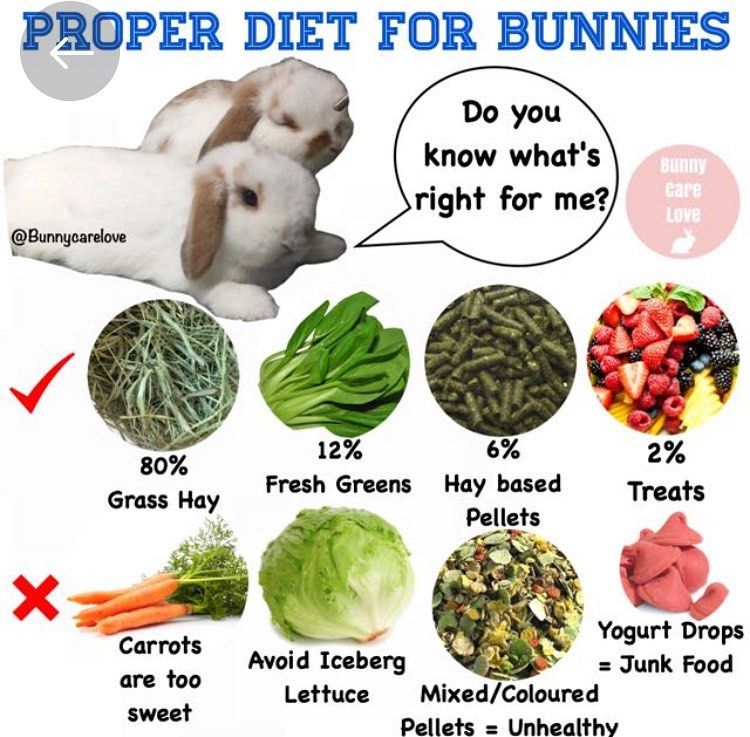 You'll also want to add climbing materials, such as tree branches or hanging dowel rods. You can push dowel rods through the holes of the cage and secure them in place by tying the ends together or placing nuts and washers on the ends. You can create a hanging or pedestal nesting box to simulate how they will live outdoors.
You'll also want to add climbing materials, such as tree branches or hanging dowel rods. You can push dowel rods through the holes of the cage and secure them in place by tying the ends together or placing nuts and washers on the ends. You can create a hanging or pedestal nesting box to simulate how they will live outdoors.
Place this cage outside or in an open garage for at least a few hours per day to help them acclimate to outdoor life. Bring them back inside or close the garage at dusk to keep them safe from lurking predators. Continue this pattern for three to four weeks.
Playtime
As with human children, play is learning. You will need to handle, stimulate, cuddle, and play with the baby squirrel to help it learn how to use its muscles. You will also want to place plenty of “toys” in its box or cage. Squirrels are not picky. They will explore and play with anything, but for their own good, include natural items. Once they have fur as physical protection against abrasions, you can place sticks, bark, woodchips, leaves, nuts, pinecones, grass clippings, sod, dirt, or feathers in the box. When you release them back outside, they will be familiar with these natural items.
When you release them back outside, they will be familiar with these natural items.
Release
At 12 weeks old, your healthy baby squirrel is ready to be released outside. Take the nesting box that you made and nail it in the crook of a tree. Try to do this when it is warm and dry for a couple of days so that you can stock the box with towels for the squirrel to hide or nestle in.
Bring the cage outside and set it door-open next to the tree. Back away and wait for the squirrel to come out. Some squirrels are more adventurous, some more cautious. Eventually, they will leave the cage and, most likely, climb the tree. They will see their nest box and know that they can use it as their new home. Remove the cage and continue monitoring their explorations.
You will want to fill a food and water bowl some distance from their nesting tree. Doing so will ensure that other animals attracted to the food are not immediately made aware of the nesting box as well. You can also use a squirrel feeder to ensure it is getting enough nutrition.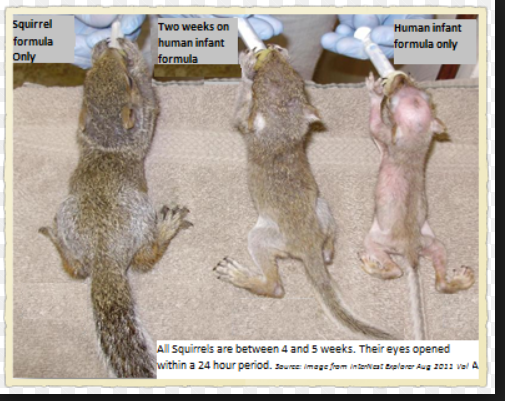
You'll eventually lose track of your squirrel friend, but don't be surprised if it comes to visit you out in the yard once in a while. If it spent three or more weeks with you, it will remember you and know that you are someone to be trusted.
Baby Squirrel Facts
Here is a quick summary of what you've read for easy reference.
- Baby squirrels make a high-pitched squeaking noise.
- Eastern grey squirrels are black, gray, or brown.
- American red squirrels are reddish-brown with a black stripe on their nose.
- Baby squirrels need to be taken care of until they are 12 weeks old.
- They are pink and bald at first.
- Baby squirrels need Pedialyte and puppy milk to grow.
- You can feed a baby squirrel with a bottle and it will bond to you as its “mother.”
- You have to keep baby squirrels warm and massage their genitals to make them pee.
- At three weeks, they start developing teeth.
- At four weeks, they open their eyes.

- At six weeks, baby squirrels can eat seeds, nuts, and fruit.
- At eight weeks, they start learning how to climb.
- Even after you release it, a baby squirrel will know and remember you.
How To Care For Baby Squirrels
<< Back to Squirrel Help & Education or Shop Squirrel Products
HOW TO CARE FOR BABY SQUIRRELS
Last Edited: July 9, 2019
You found a baby squirrel, now what?
Make sure the little squirrel is really a baby, just because the squirrel is tiny doesn't mean he's a baby. If the squirrel has a fluffed-out tail or a body longer than 6”, he's probably fine on his own. If you’re sure this is truly a baby and doesn't have visible wounds, the main goal is to get the baby squirrel warm and to reunite with its mom. Usually, the baby has just fallen from the nest. Check your surroundings to see if there is a fallen nest nearby, if there are other squirrels, etc. Do not leave the baby squirrel in the yard unless you know for sure when the nest fell and where. If the mom is going to come and get the babies, she will do so right away after the nest or babies have fallen. If the mother is not in sight, the baby could need help right now because it is getting colder by the minute and seen as prey for many animals. If you believe the baby fell recently and the mother is nearby you can keep it warm in a nest box until she retrieves it.
Do not leave the baby squirrel in the yard unless you know for sure when the nest fell and where. If the mom is going to come and get the babies, she will do so right away after the nest or babies have fallen. If the mother is not in sight, the baby could need help right now because it is getting colder by the minute and seen as prey for many animals. If you believe the baby fell recently and the mother is nearby you can keep it warm in a nest box until she retrieves it.
Make a nest box using a small plastic container (lid off) and fleece blanket to put the baby squirrel in. Use gloves or a soft cloth to pick up the baby and put it in the box outside. If you use a cardboard box it will dehydrate the baby. Towels will catch on its nails and injure it, use a soft blanket or shirt. Baby squirrels are too young to generate their own heat so having a temporary heat source is essential. Monitor the baby to make sure it stays at a normal body temperature (approx. 96-101° F). You can pour some uncooked dry rice or uncooked dry beans in a small sock, tie it off, and heat in a microwave for 30 seconds until warm (will need to reheat about every 2 hours). If you don’t have rice and beans, you can use a water bottle filled with warm water and put it in a soft sock for the squirrel to cuddle up to. If the mother doesn’t come within 30 mins, bring the baby inside. If it is nighttime, or there are potential harmful animals nearby (dogs), bring the baby inside immediately without waiting for the mother. Only until you’ve seen that the baby squirrel has been alone for some time and the mother is not retrieving it, should you remove it from the environment.
96-101° F). You can pour some uncooked dry rice or uncooked dry beans in a small sock, tie it off, and heat in a microwave for 30 seconds until warm (will need to reheat about every 2 hours). If you don’t have rice and beans, you can use a water bottle filled with warm water and put it in a soft sock for the squirrel to cuddle up to. If the mother doesn’t come within 30 mins, bring the baby inside. If it is nighttime, or there are potential harmful animals nearby (dogs), bring the baby inside immediately without waiting for the mother. Only until you’ve seen that the baby squirrel has been alone for some time and the mother is not retrieving it, should you remove it from the environment.
If the mother did not retrieve the baby, you should bring it inside full time and consider it a rescue. Once the baby is inside you can place the lid on the plastic container, but make sure there are holes in the top of the lid. If a squirrel rescue is not nearby, and you are dedicated to rescuing and raising the squirrel yourself, start acquiring what you’ll need. The baby squirrel should be moved into a more stable home than a plastic container, it would be best to get a Nest Box filled with soft bedding. Made with 100% natural cotton fibers, this nesting material is soft, cozy, and makes squirrels feel safe and secure. Remember, towels and other materials will catch on its nails. Fleece Nesting Pouches are a great option for safety and comfort. You can use the heating tricks above temporarily, but will need a no-auto-shutoff heating pad eventually. Place a Heating Pad underneath one side of the box. That way if the squirrel becomes too hot, it can simply move to the other, cooler side of the box. This heater is animal-safe and provides continuous, adjustable heating temperature to your pet. If the squirrel is too young to move itself, set the heating pad on low and monitor the baby’s temperature to see what the best placement and settings of the pad will be.
The baby squirrel should be moved into a more stable home than a plastic container, it would be best to get a Nest Box filled with soft bedding. Made with 100% natural cotton fibers, this nesting material is soft, cozy, and makes squirrels feel safe and secure. Remember, towels and other materials will catch on its nails. Fleece Nesting Pouches are a great option for safety and comfort. You can use the heating tricks above temporarily, but will need a no-auto-shutoff heating pad eventually. Place a Heating Pad underneath one side of the box. That way if the squirrel becomes too hot, it can simply move to the other, cooler side of the box. This heater is animal-safe and provides continuous, adjustable heating temperature to your pet. If the squirrel is too young to move itself, set the heating pad on low and monitor the baby’s temperature to see what the best placement and settings of the pad will be.
When the baby is warm, check for injuries using a light cloth. Carefully clean baby with blue Dawn soap or Instant Shampoo, which is a no-rinse formula that gently loosens dirt, dissolves oils, and deodorizes a squirrel's skin and coat. Remove any visible parasites (fleas, larva, eggs, etc.) on baby’s skin using an old toothbrush and/or tweezers. Then use a Q-tip to stimulate the genital area, rubbing their "nethers" with a wet and warm cloth gently. There are many helpful vidoes on youtube that will show you how to stimulate your squirrel to make them pee, demonstrate proper feeding techniques, etc.
Carefully clean baby with blue Dawn soap or Instant Shampoo, which is a no-rinse formula that gently loosens dirt, dissolves oils, and deodorizes a squirrel's skin and coat. Remove any visible parasites (fleas, larva, eggs, etc.) on baby’s skin using an old toothbrush and/or tweezers. Then use a Q-tip to stimulate the genital area, rubbing their "nethers" with a wet and warm cloth gently. There are many helpful vidoes on youtube that will show you how to stimulate your squirrel to make them pee, demonstrate proper feeding techniques, etc.
Before feeding, make sure the baby squirrel is warm. Baby squirrels cannot digest food when cold. Use O-Ring syringes with Wonder Nipples attached. The steps of feeding are - rehydrate baby first (using homemade fluid), then feed baby (using pedialyte, homemade milk replacers, and then squirrel milk replacers). Steps of hydration are listed below in FAQ. After being rehydrated, you can temporarily give your baby squirrel unflavored pedialyte for the first 24 hours of care, before beginning milk feedings.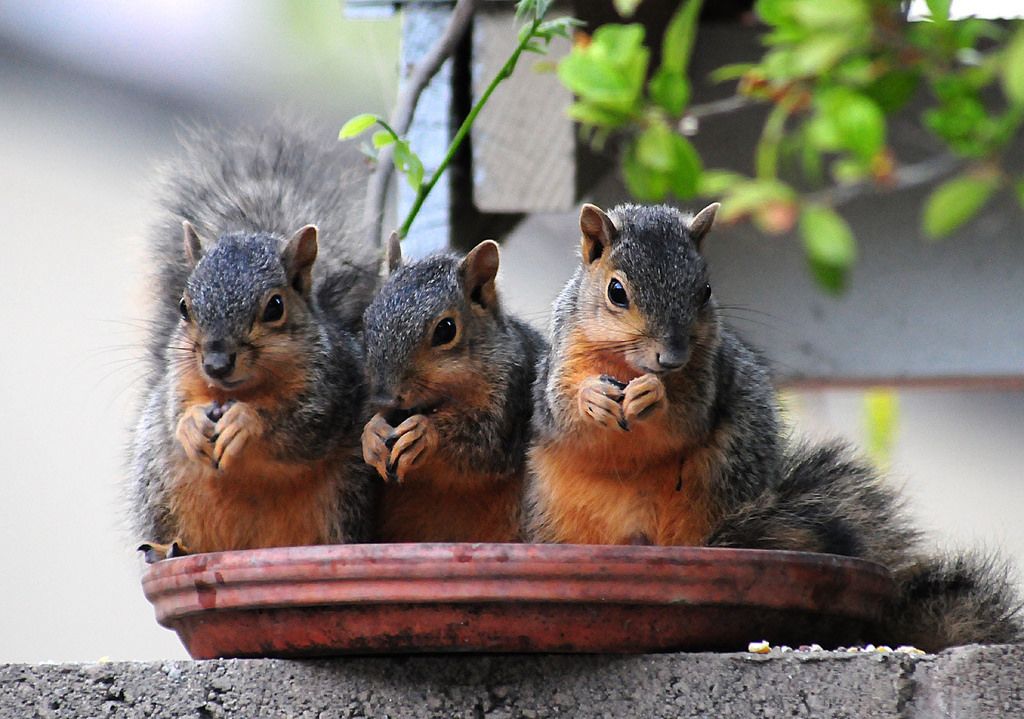 Pedialyte is very high in sodium and can only be used for a short time. Kitten formula is not usable, squirrel babies need much more fat and way less protein than kitten milk provides. You can use one of our Squirrel Nursing Sets to give the baby the Specialty Milk Replacer Formula to feed it. Specialty milk replacer provides nutrients for strong animal development (read FAQs for more info). If you don’t have the correct formula on hand and must wait for it to be shipped, you have two choices for a temporary formula for any age baby….homemade goat milk formula or esbilac puppy milk with probiotics (read FAQs for more info). Do not use these homemade formulas for more than a week, as they are not fortified with vitamins, minerals, and protein. Skip down to the FAQ section to read as much information as possible about your baby squirrel.
Pedialyte is very high in sodium and can only be used for a short time. Kitten formula is not usable, squirrel babies need much more fat and way less protein than kitten milk provides. You can use one of our Squirrel Nursing Sets to give the baby the Specialty Milk Replacer Formula to feed it. Specialty milk replacer provides nutrients for strong animal development (read FAQs for more info). If you don’t have the correct formula on hand and must wait for it to be shipped, you have two choices for a temporary formula for any age baby….homemade goat milk formula or esbilac puppy milk with probiotics (read FAQs for more info). Do not use these homemade formulas for more than a week, as they are not fortified with vitamins, minerals, and protein. Skip down to the FAQ section to read as much information as possible about your baby squirrel.
Babies less than five weeks old will need to be stimulated to poop and pee, they do not do it themselves naturally. Use a warm, wet cotton ball or Q-tip, and flick lightly across the genital area. You are simulating the mother squirrel’s tongue. Some babies may need stimulation before and after feeding, a few may eat better if you potty them in the middle of a feeding.
You are simulating the mother squirrel’s tongue. Some babies may need stimulation before and after feeding, a few may eat better if you potty them in the middle of a feeding.
When do you feed your baby squirrel?
Day 1 to Week 4: Use the Squirrel Nursing Set, feed every two hours. Weeks two and three, feed every three hours.
Week 4 to Week 7: Continue to use formula. Feed every four hours.
Week 7 to Week 9: Still feed formula. Introduce solid foods, like Deluxe Squirrel Diet, which is high-protein pellets mixed with healthy nuts. Try to feed majority pellets and leave the nuts behind at first. Make sure you have a Glass Water Bottle, Stainless Steel Cup or Ceramic Feeding Dish for the water and solid foods. These dishes are chew-proof, dishwasher safe, lead-free and much more sanitary than plastic. During the transition to solid foods do not give nuts, fruit, or treats of any kind. Concentrate on formula, protein pellets, and healthy veggies. It's important they learn to love these healthy foods before being introduced to sweet fruit and treats that will make them picky.
Concentrate on formula, protein pellets, and healthy veggies. It's important they learn to love these healthy foods before being introduced to sweet fruit and treats that will make them picky.
Week 9 to Week 10: Still feed some formula, feed two times a day. Introduce even more solid food, such as Apple Sticks, which help maintain clean and trim teeth. Begin to feed healthy Veggie Blend Treat, which contains sweet potatoes, carrots, and green peas. Use Squirrel Booster Multivitamin or Squirrel-Cal if you wish, to make sure your squirrel is getting the nutrition and calcium it needs.
Week 10 to Week 12: Once the squirrel is eating its healthy foods well, you can feed nuts, fruits, and treats. Add in the nuts of Squirrel Complete or try Premium Nut Mix. Explore other treat options. You can also feed your squirrel fruit now, like Papaya & Mango, made with real fruit. All during this process, continue to offer formula until the squirrel weans himself at around 14-16 weeks of age. Never wean a baby squirrel off formula; let them wean themselves.
All during this process, continue to offer formula until the squirrel weans himself at around 14-16 weeks of age. Never wean a baby squirrel off formula; let them wean themselves.
How do you know how old your squirrel is?
Less than 4 Weeks: Pink, no hair at all for first few weeks of life. After two weeks, soft hair grows around nose and mouth. After a month of life, light hair starts growing all over back, and lower front teeth begin emerging. Some white hair begins to grow on belly and legs.
4 -7 Weeks: Hair gets thicker, including on legs and belly. Tail hair is short, and tail begins curling over the back. Eyes open, becomes fully furred, sleeping less with more active periods. Keep your squirrel in a box until seven weeks, then start planning for a cage.
7 - 9 Weeks: About ½ full size, tail is fluffy. Should be placed in a cage with plenty of room to play. A great forage accessory for a squirrel is a Chew Stack that attaches to the cage and is made of natural wooden blocks, cylinders, and cubes. Use a large Nest Box that can attach to the cage and helps mimic the natural nesting techniques squirrels use in the wild. Make sure to fill the nest box with bedding. Clean the cage frequently and use cage liners and wipes.
A great forage accessory for a squirrel is a Chew Stack that attaches to the cage and is made of natural wooden blocks, cylinders, and cubes. Use a large Nest Box that can attach to the cage and helps mimic the natural nesting techniques squirrels use in the wild. Make sure to fill the nest box with bedding. Clean the cage frequently and use cage liners and wipes.
8 Weeks: Looks like a miniature squirrel. Very active and will shred fabrics.
9 - 12 Weeks: More muscular, about ¾ full size. Can release at 12 weeks. Upgrade your cage with the Brisbane/Congo cage Accessory Kit, that adds two shelves to your squirrel’s existing cage.
For young squirrels less than 8 weeks old, it's best to keep them in a travel carrier or small cage less than 20 inches tall, such as our Zanzibar Cage or ZooPro Travel Cage. Once the squirrel is 8-weeks or older a full-sized cage is better, to give it space to exercise and explore, along with a wooden nest box containing nesting material and other cage accessories. It's recommended to keep the bottom of the cage padded with towels as youngsters may fall and hurt themselves.
Once the squirrel is 8-weeks or older a full-sized cage is better, to give it space to exercise and explore, along with a wooden nest box containing nesting material and other cage accessories. It's recommended to keep the bottom of the cage padded with towels as youngsters may fall and hurt themselves.
FAQS
Is it dangerous to leave the baby squirrel in the yard? I want to reunite it with its mom.
Do not leave the baby squirrel in the yard unless you know for sure when the nest fell and where. If the mom is going to come and get the babies, she will do so right away after the nest or babies have fallen. If the mother is not in sight the baby needs help right now because it is getting colder by the minute and seen as prey for many animals.
Should I feed the baby squirrel first or give it water?
Feeding can actually cause death by pulling fluids from the system of a severely dehydrated animal in order to process the food that you feed it. It must be determined if the baby is dehydrated first. Give it plenty of fluids, then give it food.
It must be determined if the baby is dehydrated first. Give it plenty of fluids, then give it food.
How do I check for dehydration?
Pinch the skin on the back of his neck. If it doesn’t spring back immediately, the baby is dehydrated. If the pinched skin stays up like a tent for more than a second, the baby is badly dehydrated. Other signs of dehydration: lack of appetite, lethargy, pale gums, spiky fur, dry skin, looks thin and wrinkly. Note: These tests are not reliable in very young babies; assume every baby is dehydrated when you first find them. Use a homemade rehydration fluid if baby is dehydrated. If the baby isn't badly dehydrated, you can begin formula feeding within a few hours. Even if the baby is badly dehydrated, you will need to begin formula feeding within 6 hours.
Is there a homemade formula I can give the baby if I don’t have pedialyte or milk replacer available?
A homemade rehydration fluid is made by mixing 1 ½ tablespoons sugar with 2 cups warm water. Always warm up before feeding by filling a coffee mug with hot water, filling the syringe with the fluid, and place filled syringe in the mug for a couple of minutes. Test by squirting a drop on the inside of your wrist, it should feel very warm but not hot on your skin. Store in refrigerator if not feeding immediately. Discard after 24 hours.
Always warm up before feeding by filling a coffee mug with hot water, filling the syringe with the fluid, and place filled syringe in the mug for a couple of minutes. Test by squirting a drop on the inside of your wrist, it should feel very warm but not hot on your skin. Store in refrigerator if not feeding immediately. Discard after 24 hours.
How do I feed the baby squirrel?
Always hold the syringe so that the tip (where the baby is drinking from) is higher than the end (where you are holding). Hold it so the tip points up toward the mouth and the baby is sucking it in, it should not be spilling downward forcefully into the baby’s mouth. Place the syringe tip on the baby’s lips and squeeze out one drop for him to taste. Don’t squirt a steady stream. Let him swallow one drop before squeezing more. Go very slow, it sometimes takes a feeding or two for them to catch on. Newborn babies are fed drop by drop. With older babies you can squeeze slowly for one second, wait for him to swallow, then squeeze again. If fluids dribble out his mouth or nose, you’re going too fast. Stop and tilt the baby’s head down so the fluid drains out (support his head and neck). Then wipe his nose and mouth with a tissue. Start over, slower. If the baby isn't badly dehydrated, you can begin formula feeding within a few hours. Even if the baby is badly dehydrated, you will need to begin formula feeding within 6 hours.
If fluids dribble out his mouth or nose, you’re going too fast. Stop and tilt the baby’s head down so the fluid drains out (support his head and neck). Then wipe his nose and mouth with a tissue. Start over, slower. If the baby isn't badly dehydrated, you can begin formula feeding within a few hours. Even if the baby is badly dehydrated, you will need to begin formula feeding within 6 hours.
How do I make homemade goat milk formula?
3 parts goat milk, 1 part plain yogurt, 1 part heavy cream. Leave out the cream for the first few feedings and then add it in gradually. If diarrhea occurs, reduce or eliminate the cream for a few feedings. You can buy goats milk at almost all grocery stores. Remember this is only temporary, specialty milk replacer needs to be ordered and fed as soon as possible.
How do I make esbilac puppy milk formula?
Esbilac puppy milk (powder not liquid) must say “with probiotics and prebiotics” on the label. Dilute 3 parts water to 1 part powder for the first few feedings and then slowly increase the powder until you’re mixing it full strength according to label directions. You can find esbilac puppy milk at pet stores and Walmart. Remember this is only temporary, specialty milk replacer needs to be ordered and fed asap.
Dilute 3 parts water to 1 part powder for the first few feedings and then slowly increase the powder until you’re mixing it full strength according to label directions. You can find esbilac puppy milk at pet stores and Walmart. Remember this is only temporary, specialty milk replacer needs to be ordered and fed asap.
How do I make specialty milk replacer?
To use this milk replacer, add 250 g of powder to 400 ml of pre-boiled water. Mix to make a paste, then add 1 liter of pre-boiled water and mix thoroughly.
What sex is my baby squirrel?
If the genital opening appears near the anus, it's a female. Male baby squirrels have a larger space between the genital opening and the anus (scrotum sac).
How much bedding material should I use?
Make sure the bedding is 1- 1 ½ inch thickness to provide ample support.
How high should the temperature of the heating pad be?
Ideally you want your baby squirrel’s body temperature to be around human temperature (approx. 96-101° F).
96-101° F).
How much time does it take to open its eyes?
Most squirrels should open their eyes at about five weeks of age. Do not try to open them yourself, you could cause permanent damage.
What do you do if your squirrel is being stimulated but isn’t peeing?
Check the privates very closely. Squirrels will self nurse on their privates when they are hungry and it is possible there is a small scab that has blocked the opening. If you see any scab, soak it for a while with warm water (you can just hold a warm, wet cotton ball on it) until it softens and can be gently rubbed away. Make sure to be observing the area frequently afterwards and keeping it clean. If nothing is there, your squirrel is probably just dehydrated and needs to be given even more fluids. Give plain tap water if you need to give extra fluids between feedings. If your squirrel is still not peeing, take the squirrel to the vet. They will be able to give you good tips and might be able to get it to pee.
What should I do if my squirrel is not drinking water?
Try using a dropper and drop a small amount in their mouth, but make sure they swallow it. Wipe away excess moisture with a cloth. If they are too weak to swallow, they could choke. Remember, baby squirrels cannot digest anything when they are too cold.
How do you treat baby squirrels for fleas?
Wash them with warm water and soap. Use tweezers to sift through the hair and pick out fleas. Fleas will usually not die just by squishing them, and can jump out of tissues if you try to roll a flea up in one. You must try to rip the flea apart, or flush directly down toilet.
Can I feed a baby squirrel ‘squirrel food’?
No. Feed the baby squirrel milk replacer until it is old enough to properly eat and digest solid foods (around 7-9 weeks old).
How often should I feed my baby squirrel?
See the above ‘Feeding’ information. Make sure that the feeding schedule is consistent. Example of a three hour feeding schedule: 6am, 9am, 12pm, 3pm, 6pm, 9 pm, 12am, 3am, etc.
Make sure that the feeding schedule is consistent. Example of a three hour feeding schedule: 6am, 9am, 12pm, 3pm, 6pm, 9 pm, 12am, 3am, etc.
How should I feed my baby squirrel?
Hold your baby squirrel upright in your hand. Make sure your squirrel is wrapped in a soft fabric while your hold it. Never feed a baby squirrel lying on its back. Make sure after feeding, you help the baby urinate and defecate using a Q-tip.
What happens if my baby squirrel bloats?
Watch the stomach to make sure that it does not become too bloated. If this does occur, skip a feeding and decrease the amount of formula for the next feeding. Lengthening the amount of time between feedings and stimulating to encourage the elimination of waste will also help.
What do I do if my baby squirrel aspirates during feeding?
If the baby does aspirate fluids, pull the nipple away from the mouth, hold the baby in both hands face down and quickly by gently tip the baby forward and down to help gravity drain the fluid from the nose and lungs. Blot fluid from the nostrils and mouth. When the baby is calm and the airways are clear, resume feeding. If the baby shows any signs of illness contact your vet or wildlife resource immediately.
Blot fluid from the nostrils and mouth. When the baby is calm and the airways are clear, resume feeding. If the baby shows any signs of illness contact your vet or wildlife resource immediately.
How do I know if my baby squirrel is dehydrated?
Physical signs of dehydration are sunken eyes, overly wrinkly and/or dry skin (some wrinkles and loose skin is normal), lethargy, hypothermia, dark or hard feces, dark urine (if any), dry mucous membranes, pale gums, and signs of shock. After warming the baby, provide formula.
What do I do if my baby squirrel is experiencing diarrhea?
The baby squirrel is experiencing diarrhea if the stools are non-formed, loose, runny, or foul smelling. It is a strong indicator that something is not right in baby’s gut. This can occur with the baby is not properly transitioned to a new formula, fed the wrong formula, fed too frequently, or fed too much at feeding and ‘over extending’ the stomach. To correct, switch the baby back to an electrolyte rehydration formula such as the milk replacer formula for a few feedings. If problems continue, the baby should be seen by a vet.
To correct, switch the baby back to an electrolyte rehydration formula such as the milk replacer formula for a few feedings. If problems continue, the baby should be seen by a vet.
When will my baby squirrel start to ‘play’ and explore their surroundings?
Baby squirrels do three things. They eat, they potty, and they sleep. When their eyes open, they will start exploring their habitat and become more alert.
When do I stop giving my baby squirrel formula?
Between around 10 weeks. After that time frame, the squirrel will most likely reject the formula. If not, let the squirrel wean themselves off.
When can my baby squirrel start eating solid foods?
Between 6-7 weeks.
What if my baby squirrel’s habitat starts to smell?
Change the bedding in the your baby squirrel’s box. If the smells persists, get a different box. Use an odor eliminator, like Elimina, an odor eliminating spray that eliminates smell internally. Spray Elimina on animal's food daily, the smell from the waste will be virtually undetectable in 3 days.
Spray Elimina on animal's food daily, the smell from the waste will be virtually undetectable in 3 days.
How often should I clean the squirrel’s cage?
Change the cage liners every couple of days and clean the cage once a week.
Do squirrels hibernate?
Your pet squirrel will not hibernate however, they do sleep a lot. Squirrels are awake and active for a few hours after sunrise and a few hours before sunset. They are resting or sleeping the rest of the time. Certain species of wild squirrel do hibernate, like the ground squirrel.
How do I trim my squirrel’s nails?
Use a nail trimmer like the Pro Nail Trimmer, a double-bladed trimmer that has a long-lasting, sharp cutting edge with a comfort grip handle great for left or right hand use. Make sure you hold the paw firmly and only trim tip of nail with a single stroke. Do not cut the nails too short or the nails will bleed. Repeat as needed, every 1-2 weeks.
Repeat as needed, every 1-2 weeks.
I cut my squirrel’s nails too short and now they are bleeding. What do I do?
Wipe away the blood and dip the nails in some flour or press the flour into the tip. Make sure the nails have stopped bleeding before putting your animal back in its habitat.
Can squirrels use cage accessories, such as wheels and stones?
Yes! Some squirrels like wheels, especially ground squirrels. Make sure you get a jumbo sized one that is tail safe. They can hurt their back from arching too much if the wheel is too small. Make sure to bolt the wheel firmly to the cage so it doesn't tip over if your pet decides to swing on it. Pumice Stones are perfect for squirrels because it satisfies your pet's natural gnawing instinct and won't splinter like wood chews, even after hours of chewing. The chew block also promotes dental health and naturally wears down teeth.
What do I do if my squirrel bites me?
Lightly tap the nose, blow in their face, and sternly say no. Next time you handle them, wear gardening gloves for protection.
Next time you handle them, wear gardening gloves for protection.
What if I want to release my squirrel into the wild?
Start weaning off human contact. Provide lots of toys and other cage accessories. Start to take the cage and your pet outdoors to help adapt to the smells and sounds. Do this for a few days or a week. Then leave the cage outdoors. Put some weather protection on top of the cage. Introduce natural foods such as pine cones, acorns, natural branches. Provide natural nesting material so your pet can build his own habitat. Once your pet learns to be self-sufficient and be scared of humans release him by opening the cage door. Release your squirrel in the spring or summer, never in fall or winter. Baby squirrels do best if not released until at least 4-6 months old.
What if I want to keep my squirrel?
Make sure it is legal; some states require a license or permit. Try to take the squirrel to a rehabilitator, someone who will train your pet to be ready for the wild, who will place him in a home and with other squirrels.
________________________________________________________________________________________________________________________________________
Looking for more information on Squirrels? Browse our archive of articles:
<< Back to Squirrel Help & Education or Shop Squirrel Products
More Questions? Our customer service representatives are happy to address your questions or provide additional information about products. Please Contact Us.
Please Note: Exotic Nutrition is not in a position to provide specific health and care guidelines on an individual basis. Please visit our animal info tabs or consider purchasing a care guide book for additional information. If you have a health or pet emergency issue, please notify your veterinarian or a specialized technician.
What and how to feed street squirrels?
What do squirrels eat and not eat?
Let's not talk about domestic squirrels, which are fed in such a way that people can envy. It will be about the city barefoot, which is not combed, washed and not taught manners.
It will be about the city barefoot, which is not combed, washed and not taught manners.
Squirrels, like rats, are omnivores and are also predators. They visit garbage dumps and garbage cans regularly. When I read that street squirrels cannot be fed chips, cheese, sausage and other foods from our table, I understand that the writer is idealizing the life of a squirrel. In fact, squirrels eat everything they can eat to survive. And in the winter, they will eat your healthy nut, and then gorge themselves on French fries thrown in the trash. I often cannot catch a dog with a piece of stinking stuff found in the forest. So feed whatever you want. But! Don't feed, feed. Little by little, and not like a grandmother of grandchildren. In the wild, it is not food that causes premature death, but cold, hunger, disease, worms, predators, and gang warfare. The hungriest time is the end of winter, early spring. Lack of food in winter, as well as infectious diseases, kill up to 85% of young squirrels.
Now about what squirrels love.
Fruit.
Squirrels will happily harvest pears, grapes, apples, kiwis, avocados, peaches, nectarines, figs, plums, mangoes and citrus fruits. They eat any berries they can get their hands on, such as strawberries, blackberries, blueberries, raspberries, mulberries, and more. Squirrels are very fond of bananas, watermelons, melons and cherries! The benefit of eating fruit for squirrels is that it gives them enough glucose.
Dried fruits are a great treat for squirrels!
Vegetables.
Squirrels love vegetables to the delight of gardeners. If they stumble upon some leafy greens like lettuce, chard, kale, spinach, or arugula, they are sure to munch on them. Proteins will not disregard tomatoes, radishes, corn, pumpkin, beans, corn, peas, root vegetables, okra, eggplant, Brussels sprouts, carrots, broccoli, cabbage, asparagus, celery, cauliflower, leeks.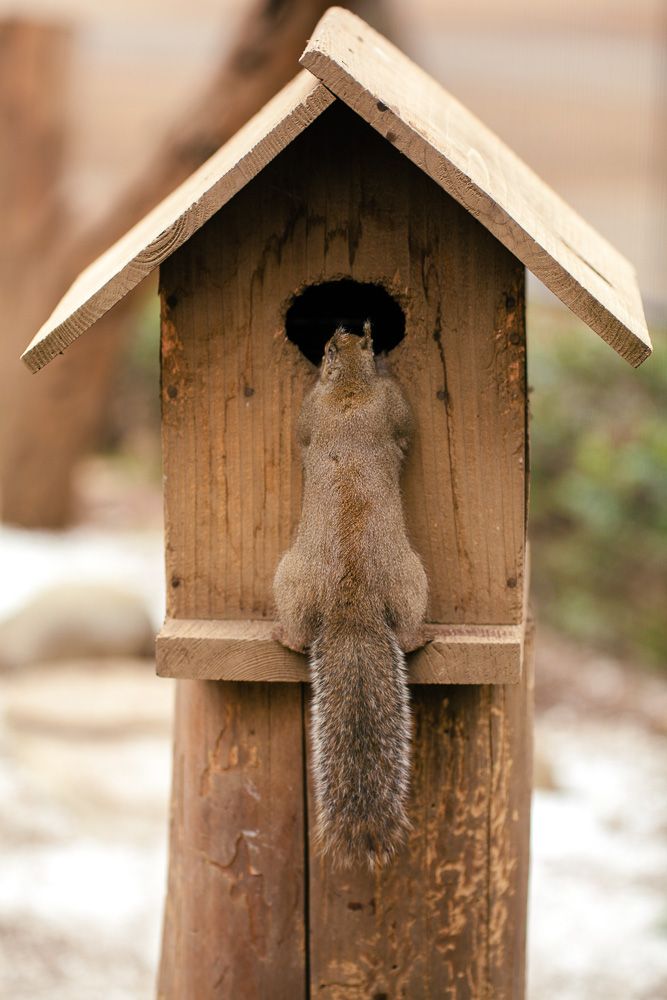
Flakes
Many squirrels are fed flakes. Squirrels naturally love the grains and nuts found in most cereals. The main advantage of many grains is that they tend to contain sugar, which gives the protein a much-needed energy boost during the winter. A lot of sweets, of course, will not provide the squirrel with a healthy lifestyle for many years, but it is better for the squirrel to die of happiness than of hunger.
Cheese
Squirrels won't encounter cheese in their natural environment, but thanks to our leftover picnics, they discovered this delicacy. They love him! Bits of cheddar, swiss, mozzarella, Russian and oltermani they will eat right away. They won't even hide. They will not pass by pizza and burger either. A good piece of cheese can give a squirrel extra fat for comfort during the winter months.
Nuts
Squirrels are fanatical about nuts. Hazelnut reproduces with the help of squirrels. The fact is that the squirrel hides nuts all over the area. Only her memory is short, and she simply forgets about them. As a result, in the spring the nuts germinate. Squirrels enthusiastically collect and eat pecans, walnuts, hazelnuts, almonds, pistachios, acorns, cashew nuts, chestnuts, hickory nuts, pine cone pine nuts, and macadamia nuts. Nuts are the optimal source of fat and protein for all types of squirrels. On the Internet, you can read about the dangers of almonds for squirrels. This assertion has a basis. But! Only if it is very hard to feed her with almonds, and especially in winter, when she is hungry. A couple of nuts will not bring her much harm. Where almonds grow, the squirrel is more tolerant to it and can eat more. In any case, it is better not to do this in the Russian expanses. Almonds are to squirrels like alcohol is to non-drinkers.
Hazelnut reproduces with the help of squirrels. The fact is that the squirrel hides nuts all over the area. Only her memory is short, and she simply forgets about them. As a result, in the spring the nuts germinate. Squirrels enthusiastically collect and eat pecans, walnuts, hazelnuts, almonds, pistachios, acorns, cashew nuts, chestnuts, hickory nuts, pine cone pine nuts, and macadamia nuts. Nuts are the optimal source of fat and protein for all types of squirrels. On the Internet, you can read about the dangers of almonds for squirrels. This assertion has a basis. But! Only if it is very hard to feed her with almonds, and especially in winter, when she is hungry. A couple of nuts will not bring her much harm. Where almonds grow, the squirrel is more tolerant to it and can eat more. In any case, it is better not to do this in the Russian expanses. Almonds are to squirrels like alcohol is to non-drinkers.
Bird food
Squirrel loves bird feeders. There are tons of videos on the net about how a squirrel tries to climb into the feeder. From bird food, she loves everything! Corn, seeds, wheat, millet. Even millet, which is eaten only by chickens, she will eat and not wince.
From bird food, she loves everything! Corn, seeds, wheat, millet. Even millet, which is eaten only by chickens, she will eat and not wince.
Insects
If fruit and nuts are not available, the squirrel will hunt for small insects to meet its protein requirement. Their diet includes caterpillars, grubs, winged beetles, grasshoppers, locusts, wounded butterflies and crickets.
Mushrooms
Squirrels are foragers and love mushrooms. She will not eat a mushroom that is poisonous to her, as a person can do. Squirrels can feed on lichen growing on the bark of many, especially mature trees. But in urban environments, they will prefer other food. Trying to treat a squirrel with mushrooms rarely brings results.
Eggs
This is a very nutritious prey. Finding them for a squirrel is a special happiness. To get bird masonry out of a hollow, to steal an egg from a chicken coop - this is the ultimate of her dreams. The squirrel will not miss the chance to take the chicks out of the hollow or nest or to grab the fallen pilot on the ground.
The squirrel will not miss the chance to take the chicks out of the hollow or nest or to grab the fallen pilot on the ground.
Plant Material
Squirrels will dig up roots, eat young leaves, fresh grass, plant stems. They tend to feed on the most tender and young stems and branches of plants, soft twigs and bark. They love sunflower, pumpkin, safflower, poppy seeds, pine buds, spruce, fir, larch seeds. Swallows will gladly eat your precious poppy flowers, hibiscus flowers, your passion flower petals and plant bulbs.
You won't be able to feed them grass or hay like a cow or a horse. Flowers in your hands, they will not appreciate either.
Dog and cat food
Squirrels are omnivorous and easily steal dog and cat food near private homes. A hungry squirrel can be so bold in experiments that he will even eat wet cat food or canned dog food, although this is not his passion at all.
Waste and more waste
The next time you take out the trash or leave the remains of your picnic in the woods, know that a hungry squirrel is sure to find them. Will digest frozen pieces of birthday cake or sandwich crusts. Proteins do a great job of recycling and composting our sometimes excessive food waste. And such a service is harmful to animals in every way. The animal is out of the habit of looking for food in a natural way. If a squirrel only eats in a trash can, regular fried sausages, marshmallow buns and chocolates will painfully drive the poor guy to his grave. That's why I said that a slice of french fries or cheese in the woods could save a squirrel's life. A slice, not a bag of waste from the master's table.
When I overfed my dog with macadamia nuts, I realized that there is no limit to idiocy. After all, the dog asked so and was ready to carry out any commands. Even the poem was ready to tell. It ended with colic and a veterinarian. A veterinarian will not come to a squirrel with colic.
A veterinarian will not come to a squirrel with colic.
What doesn't a squirrel love?
Quite a bit. Raw onions, garlic, peppers and similar, harsh herbs and spices. She also hates things that cannot be eaten.
What is not advisable to give a squirrel?
Almonds, salted nuts, dairy products, chocolate, confectionery. Not desirable - does not mean impossible. It is not prohibited by law, and the squirrel will not die in front of everyone with a cry of “Oh Kolya, Kolya, how could you?”. You just need to remember that unnatural products are already found everywhere in the city.
Do you feed squirrels in parks or in your backyard?
Animals are funny, mobile and very popular with children and adults. I really want to feed from my hand and have time to stroke. A person at the moment of communication with an animal believes that stroking the head and back is a pleasure. We do it with such love! Yes, it delivers, but only to a person. The animal is a boorish and selfish creature. And do not try to endow him with feelings of shame, love, care and gratitude. No, of course you can create such an illusion for yourself. But it is desirable to endow small and toothless creatures with these features. The larger the animal, the more you need to restrain yourself in the desire to feed it from your hand. But the squirrel is so small and cute. Can such an animal be evil? Maybe! And this is the basis of survival in the wild. The animal must be careful not to let itself be touched. In addition, in search of food, they arrange quite violent fights. They have no delicacy, and intelligent squirrels die in nests, saying to their brothers and sisters: "Thank you, I'm not hungry, take my nut!" Of course, if you feed a squirrel for many months, then it gets used to you and does not see a threat. You can take a risk and stroke. But still take the risk! A wild animal will never become a domestic animal.
We do it with such love! Yes, it delivers, but only to a person. The animal is a boorish and selfish creature. And do not try to endow him with feelings of shame, love, care and gratitude. No, of course you can create such an illusion for yourself. But it is desirable to endow small and toothless creatures with these features. The larger the animal, the more you need to restrain yourself in the desire to feed it from your hand. But the squirrel is so small and cute. Can such an animal be evil? Maybe! And this is the basis of survival in the wild. The animal must be careful not to let itself be touched. In addition, in search of food, they arrange quite violent fights. They have no delicacy, and intelligent squirrels die in nests, saying to their brothers and sisters: "Thank you, I'm not hungry, take my nut!" Of course, if you feed a squirrel for many months, then it gets used to you and does not see a threat. You can take a risk and stroke. But still take the risk! A wild animal will never become a domestic animal. It is enough that in a neighboring yard, a person at the time of feeding will click her on the nose. There are many inadequate people and one such inadequate is enough to erase the established relationships. He clicked, and you, for your own nut, were bitten. Now about the squirrel bite! I really liked how they reassured a girl bitten by a squirrel on one forum: - “It's okay, go to bed, everything will be fine :) Good luck!” Russian people are unique. He does not believe in condoms (especially in the USSR), he does not believe in viruses, rabies, etc. He doesn't believe in death either. And after the bite, he looks at the statistics of rabies.
It is enough that in a neighboring yard, a person at the time of feeding will click her on the nose. There are many inadequate people and one such inadequate is enough to erase the established relationships. He clicked, and you, for your own nut, were bitten. Now about the squirrel bite! I really liked how they reassured a girl bitten by a squirrel on one forum: - “It's okay, go to bed, everything will be fine :) Good luck!” Russian people are unique. He does not believe in condoms (especially in the USSR), he does not believe in viruses, rabies, etc. He doesn't believe in death either. And after the bite, he looks at the statistics of rabies.
Squirrel Food
If there are few rabid squirrels, then you can take a chance and not go to the doctor. Logical and desperate! In my understanding, feeding a squirrel from your hand is like feeding a homeless person in the transition. Giving him money or food is debatable. The bum is not as playful and funny as the squirrel. Yes, I chose this life. But putting a nut in his mouth with your hands smacks of madness. And the presence of diseases, and incurable ones, in all the homeless, should not be ruled out. That is why the question is: “Is it worth the pleasure of scratching the squirrel dome of a rabies vaccination, going to the doctor, or self-confident expectation of a lethal outcome?” When squirrels gather a lot, they enter the courage and competition for food. Especially in winter! At such times they are especially aggressive. And do not be surprised when they first jump on your head like baboons, and then bite your manicure right down to the cuticle. Proteins in nature suffer from many dangerous diseases, one of the most common is tularemia. wikipedia.org/wiki/Tularemia". They almost all have worms and mites.
Yes, I chose this life. But putting a nut in his mouth with your hands smacks of madness. And the presence of diseases, and incurable ones, in all the homeless, should not be ruled out. That is why the question is: “Is it worth the pleasure of scratching the squirrel dome of a rabies vaccination, going to the doctor, or self-confident expectation of a lethal outcome?” When squirrels gather a lot, they enter the courage and competition for food. Especially in winter! At such times they are especially aggressive. And do not be surprised when they first jump on your head like baboons, and then bite your manicure right down to the cuticle. Proteins in nature suffer from many dangerous diseases, one of the most common is tularemia. wikipedia.org/wiki/Tularemia". They almost all have worms and mites.
Take care of your health! Restrain impulses of love and cuteness! Watch, feed, take pictures, laugh and be surprised when you look at these pranksters. Create squirrel rides out of boxes, plastic pipes and ropes. They love these games. You don't have to touch nature to enjoy nature!
They love these games. You don't have to touch nature to enjoy nature!
| Frendessa asked in the comment what can be fed to the squirrels that are so adorably hand-eaten? I had to check my own experience with scientific recommendations. Fortunately, squirrels belong to the so-called omnivorous rodents. Her digestive system does not absorb coarse fiber, so the squirrel does not eat grass. But she can eat nuts, mushrooms (remember the pictures in children's books - a family of squirrels in some kind of hollow, and mushrooms are certainly strung on the branches around?), seeds, eggs (yes, our little squirrels don’t mind robbing bird nests), meat (if the little chick has already come across small chicks in the nest, she will also include them in her menu). Here is the ration intended for squirrels in captivity (from the norms of the Moscow Zoo): Item No. Name of feed Periodicity of issuance Reference. 1 millet bread. daily 10 Please note: bread wheat (not rye!!!) comes first. But also pay attention to the quantity - only 10 grams! In general, the total amount of food eaten by a squirrel per day should not exceed 45 grams, otherwise it is threatened with obesity, low mobility and, as a result, serious health problems, even death. And, of course, it’s unlikely that squirrels are given fresh bread at the zoo - I think they are given a small one white unsalted, unsweetened, not fried croutons . That is, unlike ducks, bread (dry) can be given to squirrels. Of course, not moldy crackers - you yourself won’t eat that, will you? Well, other mammals don't want to either. But one must keep in mind that where squirrels eat well themselves and / or receive good feeding from people (seeds, nuts), they will only slightly swallow the cracker, and then they will carry it to bury. We are unlikely to take eggs, fish, vegetables and fruits to the forest or park to feed the squirrel. Although, if someone has a boiled egg at a picnic, you can try to offer the squirrel a small piece (you see, in the zoo they are given 1 g of eggs every other day). Squirrels definitely love watermelon, I saw with my own eyes with what pleasure they eat both seeds and watermelon pulp. As it appears from the list, sweet biscuits are given to squirrels in the zoo, but "for work" (apparently, when you need to achieve something from a squirrel?) and in a microscopic amount (2 g). Honey is also given and also in microdoses, but other manuals categorically do not advise honey. I think it is unlikely that anyone will drag a jar of honey into the park, but, unfortunately, they try to feed sweets and sweet cookies to squirrels. No need to do this - think: if tame animals can be shown to a veterinarian, then who will treat the teeth and digestive system of wild squirrels? So, for squirrels , nut mixture and seeds are best. This includes: hazelnuts (hazelnuts), pine nuts and walnuts, also in a small amount peanuts. Sunflower, pumpkin, watermelon and melon seeds are also an integral part of this mixture. All components of the mixture must be necessarily not fried, not salted , and the nuts must be in the shell. I’ll add from myself - it’s okay if the walnut is whole, the squirrels very famously grind the shell to holes of the required size, and then extract the contents, but simply, if the squirrel is not too hungry, it will not cut the nut shell with its teeth for a long time, but most likely will bury him. So if you treat a squirrel with a walnut, you need to prepare a treat. What should not be given to squirrels? Sweet As you can see, almost everything that is not useful for us, humans, is harmful to proteins. Don't forget to wash your hands after feeding the cute animals! Based on materials from various websites, based on our own long-term observations of a family of squirrels that lived on the roof of our house and collected tribute from our apartment and not only, and yesterday's conversation with Lena dink, a veterinarian who artificially fed and raised a squirrel last year Tirli, dropped by a crow. |

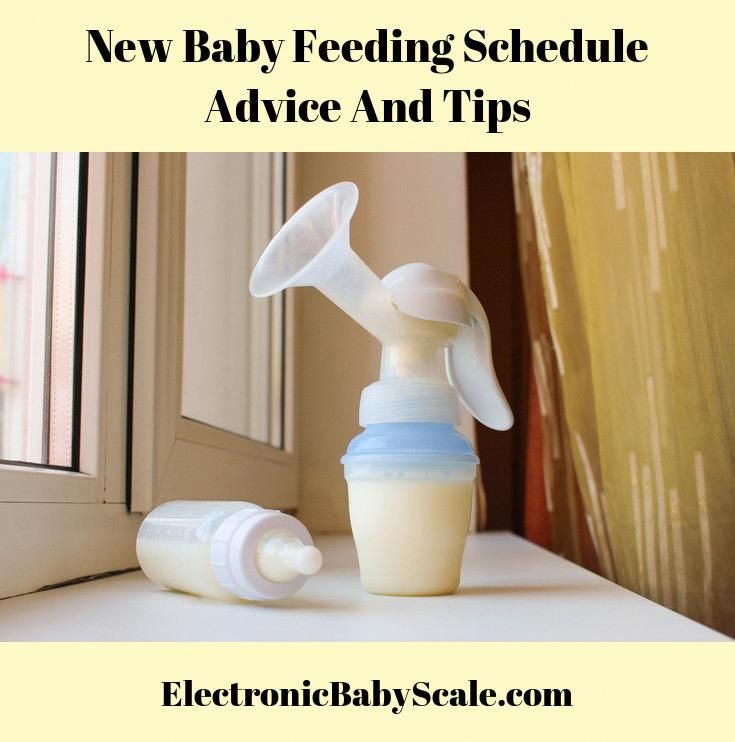 In addition, in the forest, squirrels gnaw on the bones and teeth of animals eaten by predators or discarded horns of ungulates - they replenish calcium, making bone meal for themselves, and grind down their teeth (rodents need this - their teeth grow all their lives).
In addition, in the forest, squirrels gnaw on the bones and teeth of animals eaten by predators or discarded horns of ungulates - they replenish calcium, making bone meal for themselves, and grind down their teeth (rodents need this - their teeth grow all their lives).  every other day 1
every other day 1  And in this way we will again feed, at best, ants in the leafy litter under the trees, and at worst, mice or rats. According to my observations, squirrels are more willing to eat small unsweetened and unsalted crackers - remember, there were such tiny cookies called "Zoological", in the form of animal figurines? Here they were perfect. Unsweetened biscuits "Maria" also went well. If the squirrel ate one cracker, and carried the second one instilled, don't give it anymore. Protein should not be overfed. The squirrel must move in search of food (to whom should it? By its nature, it is a very mobile animal).
And in this way we will again feed, at best, ants in the leafy litter under the trees, and at worst, mice or rats. According to my observations, squirrels are more willing to eat small unsweetened and unsalted crackers - remember, there were such tiny cookies called "Zoological", in the form of animal figurines? Here they were perfect. Unsweetened biscuits "Maria" also went well. If the squirrel ate one cracker, and carried the second one instilled, don't give it anymore. Protein should not be overfed. The squirrel must move in search of food (to whom should it? By its nature, it is a very mobile animal).  But, as they write on the link, they prefer apples, pears and bananas.
But, as they write on the link, they prefer apples, pears and bananas.  An exception may be a walnut, it needs to be slightly chopped.
An exception may be a walnut, it needs to be slightly chopped. 


